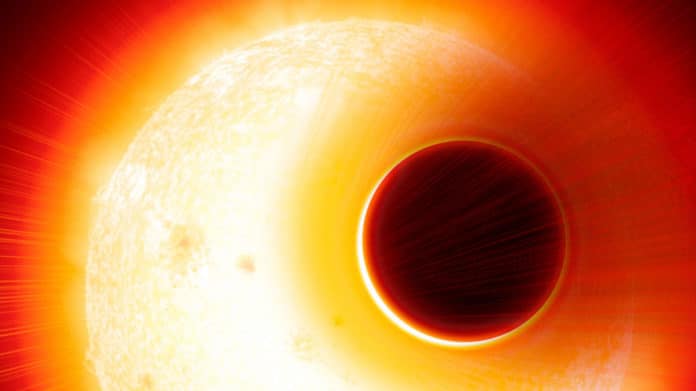Magnetic fields play a crucial role in protecting planetary atmospheres. Detecting the magnetic fields of exoplanets could offer a better understanding of how these alien worlds may look like.
Using data from Hubble Space Telescope, an international team of astronomers discovered the signs of a magnetic field in a planet outside our solar system. The team observed the exoplanet HAT-P-11b, a Neptune-sized planet 123 light-years from Earth.
Hubble observed the exoplanet in the ultraviolet light spectrum, which is just beyond what the human eye can see. The telescope detected carbon ions surrounding the planet in the magnetosphere.
Gilda Ballester, an adjunct research professor at the University of Arizona Lunar and Planetary Laboratory and one of the paper’s co-authors, said, “This is the first time the signature of an exoplanet’s magnetic field has been directly detected on a planet outside our solar system. A strong magnetic field on a planet like Earth can protect its atmosphere and surface from the direct bombardment of the energetic particles that make up the solar wind. These processes heavily affect the evolution of life on a planet like Earth because the magnetic field shelters organisms from these energetic particles.”
The discovery of the magnetosphere offers a better understanding of an exoplanet’s habitability. Not all the planets and moons in our solar system have magnetic fields. Still, the correlation between magnetic fields and a planet’s habitability still needs more study.
Ballester said, “HAT-P-11 b has proven to be a very exciting target because Hubble’s UV transit observations have revealed a magnetosphere, seen as both an extended ion component around the planet and a long tail of escaping ions. This general method could be used to detect magnetospheres on a variety of exoplanets and to assess their role in potential habitability.”
The team also discovered carbon ions in a region surrounding the planet and extending in a long tail that streamed away from the planet at average speeds of 100,000 mph. The tail reached into space for at least 1 astronomical unit, the distance between Earth and sun.
Later, using 3D computer simulations, scientists modeled interactions between the planet’s uppermost atmospheric regions and magnetic field with the incoming solar wind.
Ballester explained, “Just like Earth’s magnetic field and its immediate space environment interact with the impinging solar wind, which consists of charged particles traveling at about 900,000 mph, there are interactions between HAT-P-11 b’s magnetic field and its immediate space environment with the solar wind from its host star, and those are very complex.”
The physics in the magnetospheres of Earth and HAT-P-11b are the same. However, the proximity of the exoplanet to its star causes its upper atmosphere to warm and essentially “boil off” into space, forming the magnetotail.
The metallicity of HAT-P-11 b’s atmosphere is found to be lower than expected. This low metallicity challenges current models of exoplanet formation.
Ballester said, “Although HAT-P-11 b’s mass is only 8% of that of Jupiter, we think the exoplanet more resembles a mini-Jupiter than a Neptune. The atmospheric composition we see on HAT-P-11b suggests that further work needs to be done to refine current theories of how certain exoplanets form in general.”
Journal Reference:
- Ben-Jaffe, L., Ballester, G.E., Muñoz, A.G., et al. Signatures of strong magnetization and a metal-poor atmosphere for a Neptune-sized exoplanet. Nat Astron (2021). DOI: 10.1038/s41550-021-01505-x
